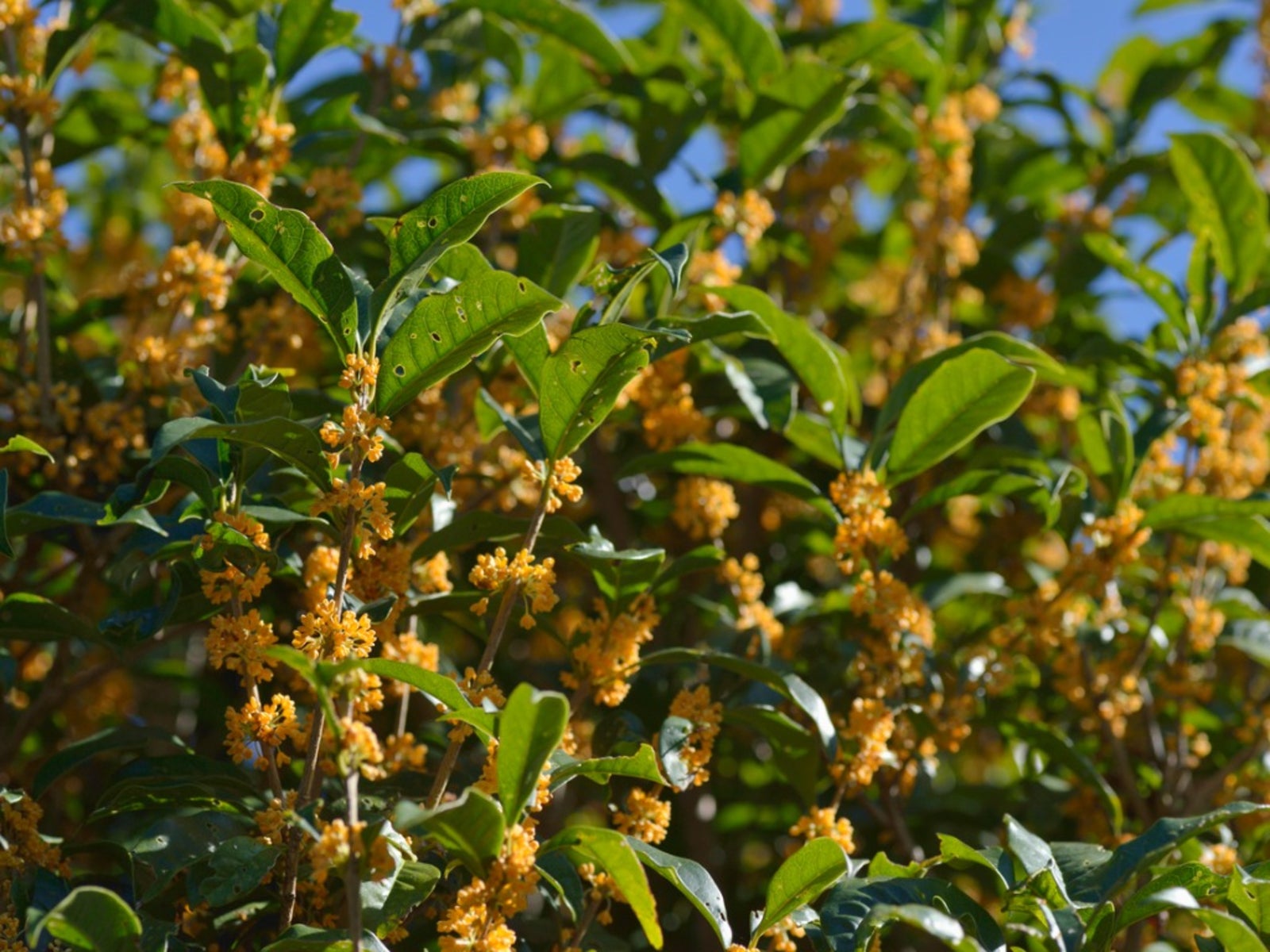Osmanthus Bush Uses: Fragrant Tea Olive Cultivation And Care


Osmanthus fragrans is a shrub or small tree recognized more by its fragrance than its appearance. Common names include tea olive, although it isn't a member of the olive family, and false holly for its spiny, holly-like leaves. Read on to learn about growing Osmanthus plants.
Tea Olive Cultivation
Osmanthus bush uses revolve around the shrub's scent. Plant it near windows, outdoor seating, and patios where you can enjoy the fragrance the most. Growing Osmanthus plants as a hedge creates a wall of fragrance. Passers-by will wonder at the source of the delightful fragrance, never suspecting the tiny little flowers on the Osmanthus shrub. Fragrant tea olives begin blooming in fall, and in warm climates, the blooms continue all winter. The evergreen foliage is dark and leathery with toothed edges. Individual flowers are tiny but noticeable since they bloom in clusters. The fragrance has been compared to that of jasmine, orange blossoms, or peaches. Tea olive cultivation is easy because they require little pruning, and they are relatively pest-free.
Osmanthus Tea Olive Care
Osmanthus needs a location in full sun or partial shade. They have a denser growth habit in full sun than in shade. Variegated types tend to bleach out in full sun, so give them a little afternoon shade. The shrubs tolerate most acid to neutral soils and need good drainage. Plant them 4 to 6 feet (1-2 m.) apart to form a hedge or screen. Water newly planted Osmanthus regularly until the shrub is established and begins to grow. After the first season, you only need to irrigate it during prolonged dry spells. Fertilize with a general-purpose fertilizer every year or two in fall. Spread the fertilizer over the root zone and water it in. You can also use a layer of compost as a slow-release fertilizer. Osmanthus doesn't need a lot of pruning. When you prune, remove branches selectively rather than shearing. Severe pruning can prevent the shrub from blooming for several years. You can remove the lower lateral branches to form a small, multi-trunked tree.
Sign up for the Gardening Know How newsletter today and receive a free copy of our e-book "How to Grow Delicious Tomatoes".

Jackie Carroll has written over 500 articles for Gardening Know How on a wide range of topics.